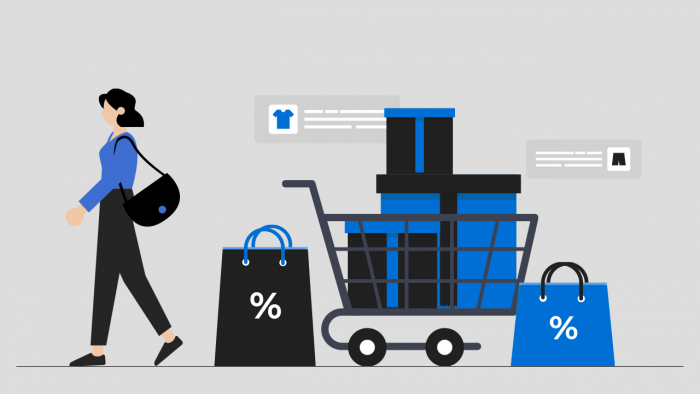Table of Content
- The Alarming Reality of Cart Abandonment
- WhatsApp: The Go-To Messaging Platform
- Global Reach
- How WhatsApp Chatbots Address Cart Abandonment
- Steps to Implement a WhatsApp Chatbot for Your Store
- Analyzing the Impact
- Real-World Examples
- Finance Company Selling Loan Products
- Persuasive Tactics That Work
- Handling Customer Privacy
- Overcoming Potential Pitfalls
- Integrating a Multilingual Support chatbot
- Best Practices for Long-Term Success
- Wrapping it up
Cart abandonment is a stubborn challenge.
You watch potential buyers leave in the final checkout steps, frustrating and costly.
But what if you could reach them instantly on a platform they love?
Enter WhatsApp chatbots, a game-changer for e-commerce and beyond.
The Alarming Reality of Cart Abandonment
People abandon about 70% of online shopping carts on average.
It means only 3 out of every 10 visitors complete their purchase.
That’s a huge revenue loss for businesses. Imagine if you could rescue just half of those abandoned carts, it would transform your bottom line.
Reasons vary. Some see unexpected shipping fees, others get distracted, and many just want to compare prices.
Why This Matters to You

If you’re in e-commerce, retail, or any sector that sells online, cart abandonment eats into profits.
A direct, personalized approach can change the game.
WhatsApp chatbots give you an immediate communication channel.
They deliver tailored messages to remind, assist, and convert shoppers who’ve left items in their carts.
WhatsApp: The Go-To Messaging Platform
WhatsApp has over 2 billion users worldwide.
Chances are, your customers (and potential customers) use it daily.
They’re comfortable messaging friends and family, so chatting with your business feels natural.
No app downloads, no complicated forms—just a simple text.
Real-Time Engagement
Email reminders can go unopened for days, if at all.
WhatsApp messages have a much higher open rate, often within minutes.
This real-time aspect is critical.
You catch people before they forget about the item or buy elsewhere.
Global Reach
Many regions prefer WhatsApp over other messaging apps.
Think Latin America, India, parts of Europe, and beyond.
Providing a WhatsApp chatbot isn’t just trendy—it’s essential to reach these audiences effectively.
If you want a Multilingual Support chatbot, having it on WhatsApp breaks language barriers and fosters trust.
How WhatsApp Chatbots Address Cart Abandonment
A chatbot can’t magically force someone to buy.
But it can re-engage them with convenience and speed.
Personalized Reminders
When a shopper leaves their cart, the bot can send a friendly message:
“Hi! We noticed you left something special in your cart. Need help completing your order?”
This message often jogs the user’s memory or addresses uncertainties.
They might say, “I forgot my discount code” or “I’m unsure about shipping.”
Instant Q&A
A chatbot can answer key questions like:
● “What’s the return policy?”
● “How long does shipping take?”
● “Is there a coupon code?”
These might be minor details, but they often cause hesitation.
Once answered, the barrier to purchase drops significantly.
Seamless Checkout Links
The bot can send a direct link back to the user’s cart or a specific payment page.
One tap, and they’re ready to finalize the purchase.
No need to open a browser, navigate to the store, or re-enter login details.
This convenience is a huge factor in boosting conversions.
Steps to Implement a WhatsApp Chatbot for Your Store
You might think chatbots are complicated.
But it’s simpler than you think with the right approach.
1. Integrate Your Platform
Connect your e-commerce software—like Shopify, WooCommerce, or custom setups—to the chatbot solution.
This ensures real-time access to inventory, orders, and user info.
When a user abandons a cart, the system records it and triggers the chatbot to send a WhatsApp reminder.
Integration is crucial for smooth handoffs and accurate data.
2. Craft the Right Scripts
Plan your chatbot’s conversation flow.
Welcome message, cart reminder message, discount offer message—these should be clear, polite, and concise.
Keep them short.
Users scroll quickly on WhatsApp, so avoid paragraphs of text.
3. Provide Quick Action Buttons
WhatsApp chatbots support buttons for replies or actions.
“Apply Discount,” “View Cart,” or “Talk to Support” can appear as clickable options.
These make the experience feel effortless.
Users see a direct path to finish what they started.
4. Add a Human Escalation Path
Not all questions can be automated.
If someone asks about a custom order or advanced shipping to remote locations, offer a human agent.
A simple “Connect me to a person” button ensures you don’t frustrate complex buyers.
This step fosters trust—they know a real human is available if needed.
5. Test Thoroughly
Launch a pilot with a small set of customers.
See if the chatbot triggers at the right time and if users find it helpful.
Gather feedback on tone, response speed, and clarity.
Refine the scripts and fix any integration hiccups before a full-scale launch.
Analyzing the Impact
How do you know if your WhatsApp chatbot is working?
Track these metrics to see real, quantifiable results.
Cart Recovery Rate
Look at how many abandoned carts get “rescued” after the chatbot message.
If it’s rising, you’re engaging users effectively.
Conversion Rate from Chat
Measure how many users finalize a purchase after interacting with the bot.
Higher numbers mean your script and flow resonate well.
Customer Satisfaction
Collect short feedback.
“Rate this chat from 1 to 5” can reveal if the bot meets user needs or if you need improvements.
Response Speed
One reason chatbots shine is immediate replies.
Monitor average response times to ensure your system remains quick.
Real-World Examples
Let’s explore how businesses use WhatsApp chatbots to cut cart abandonment.
E-Commerce Fashion Boutique
A small boutique saw a 55% cart abandonment rate.
They launched a WhatsApp chatbot for reminders, offering a 10% discount code to returning shoppers.
In one quarter, their cart abandonment rate dropped to 35%.
That’s a direct lift in sales, with minimal extra work for the team.
Large Online Marketplace
A global marketplace struggled with tens of thousands of abandoned carts daily.
They built an automated WhatsApp system that pinged users about items left behind.
Their re-engagement rate soared.
Users loved the quick answers to size charts and shipping queries, leading to a 15% bump in overall conversions.
Finance Company Selling Loan Products
Finance and banking services also see “abandoned processes,” where users start applications but don’t finish.
A WhatsApp chatbot followed up on incomplete forms, clarifying interest rates or required documents.
The result?
A more streamlined application pipeline and fewer drop-offs.
Persuasive Tactics That Work
It’s not just about reminding people they have items waiting.
You can use subtle tactics that gently nudge them towards checkout.
Urgency and Scarcity
Phrases like “Only 3 left in stock” or “Discount code expires tonight” can motivate quick actions.
But be genuine—false scarcity can erode trust.
Personalized Offers
If data shows they viewed a certain product multiple times, highlight it in your reminder.
Mention color options or how it pairs with another item they liked.
Fear of Missing Out (FOMO)
People hate missing deals.
If something is on sale or part of a limited collection, mention that.
A gentle line like, “Others are buying this item fast” can tip them over the edge.
They don’t want to miss out on a popular product.
Handling Customer Privacy
WhatsApp is known for its encryption, but you still must respect user privacy.
Ask for consent before sending messages.
Clear Opt-In
Customers should opt in to WhatsApp updates or reminders.
This prevents spam complaints and keeps your brand image positive.
Easy Opt-Out
Provide an unsubscribe keyword like “STOP.”
Make it easy for people to opt out if they no longer want messages.
Data Compliance
Follow regional laws like GDPR.
Store user data securely, only use it for the agreed purpose, and be transparent about what you collect.
Overcoming Potential Pitfalls
No tool is perfect.
Here’s how to sidestep common mistakes when deploying WhatsApp chatbots.
Being Too Pushy
Message frequency matters.
Bombarding users with daily reminders is annoying and leads to unfollows.
Stick to a balanced approach, maybe one or two friendly check-ins.
Respect personal space and time.
Underestimating Localization
WhatsApp has a global user base.
Localization in language, currency, and culture is vital.
Use local currency symbols, shipping times, or cultural references.
This personal touch shows respect and authenticity.
Not Evolving the Bot
Your product line changes, promotions come and go.
Update the bot’s knowledge base regularly.
If you ignore it, you risk sending outdated codes or referencing items no longer in stock.
Stale info hurts your credibility.
Integrating a Multilingual Support chatbot
One critical component is speaking your customers’ language—literally.
If you cater to global audiences, a Multilingual Support chatbot approach is a lifesaver.
You configure your bot to detect or ask for the user’s preferred language.
They get help in French, Spanish, or Mandarin without switching apps.
This feature fosters trust and comfort, essential for finalizing purchases.
It’s all about reducing friction at the last moment of decision.
Best Practices for Long-Term Success
A chatbot is not a one-and-done deal.
Maintain it, track performance, and evolve.
1. Seasonal Promotions
Use your chatbot for holiday sales, Black Friday deals, or year-end clearance.
Announce special codes or free shipping to re-attract those with abandoned carts.
2. A/B Testing
Test different reminder messages or discount offers.
See which variant leads to higher conversions, then standardize the winner.
3. Encourage Feedback
Ask customers to rate their chatbot experience.
Their insights can shape your next update, ensuring the bot stays relevant and helpful.
4. Ongoing Staff Training
Your human team should understand how the chatbot works.
If a user escalates, staff can quickly view conversation history and resolve issues without repeating steps.
Wrapping it up
WhatsApp chatbots are more than tech gimmicks.
They’re powerful tools to rescue abandoned carts, offer real-time support, and boost conversions across industries.


